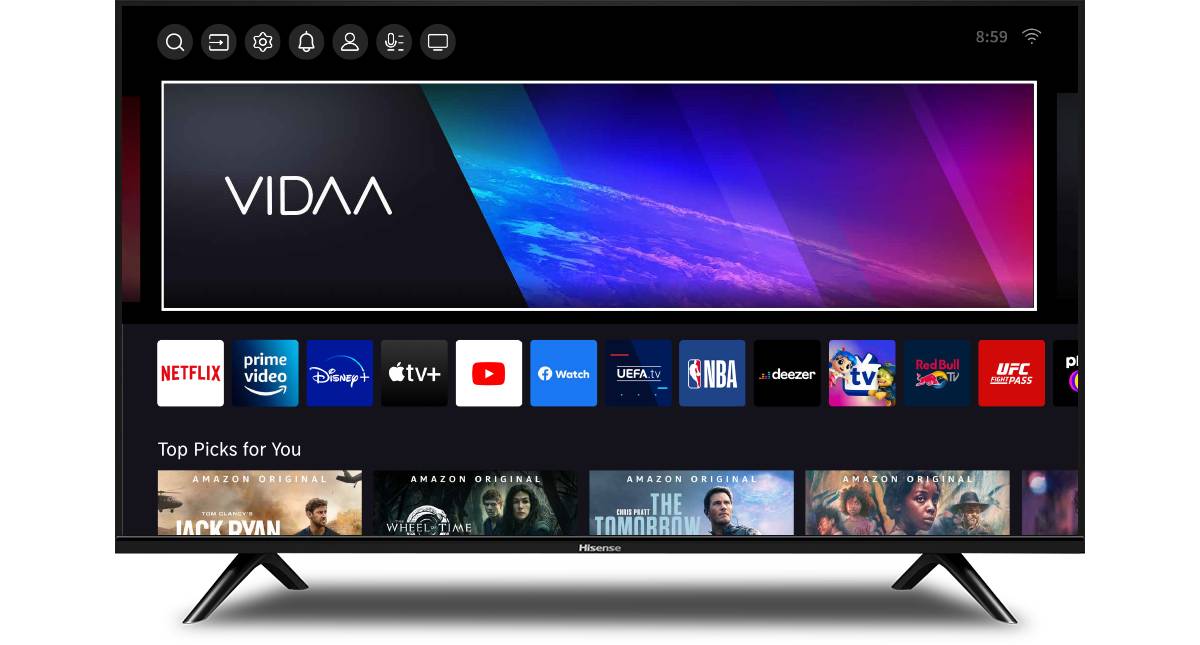There’s been something of a resurgence in free-to-air sports in the UK over the past few years. Channel 4’s strategy of securing late deals for prominent one-offs like the final of last year’s US Open, won by Britain’s own Emma Raducanu, and the final race of the F1 season, narrowly lost by the UK’s Lewis Hamilton, have been a prominent feature of the trend.
But fellow public service broadcaster ITV has also been investing carefully in sports. Today ITV announced it has agreed a deal to broadcast five live Premiership rugby matches, including the final. This will rise to seven games for the next two seasons. BT Sport remains the primary rights holder, and ITV’s five games will be simulcasts of BT’s coverage.
This replaces a similar deal held by Channel 5 until relatively recently – though Channel 5’s coverage didn’t include the final. ITV’s deal marks the first time that the final will be broadcast on free-to-air.
ITV also last year scooped up live rights to two MotoGP races, returning MotoGP to free-to-air for the first time since 2013.
A unique opportunity
All of these cases highlight a unique opportunity in sports for free-to-air broadcasters at the moment.
Sports have long been seen as one of the last strongholds of live linear TV, but free-to-air broadcasters have found it difficult to compete for live sports packages given the high price tags they command.
Paid services have an easier time monetising sports rights, and so can pay higher fees in bidding wars. This has resulted in a number of sports, which historically were available free-to-air, disappearing inside paid subscription services.
This model works for some. The Premier League remains the UK’s most popular sports league, despite receiving no free-to-air live coverage. Football’s fan base is big enough and enthusiastic enough in the UK that many will pay for sports subscriptions – and those who won’t can still find comprehensive highlights for free on the BBC’s Match of the Day.
But some sports leagues are starting to feel the negative effects of these deals. Short term revenue gains come at the cost of falling audience numbers, as more casual fans choose not to pay for coverage. And perhaps more importantly, it becomes much harder to attract and engage new fans.
A common theme in post mortems of England’s recent 4-0 Ashes defeat in Australia has been the impact of cricket disappearing off free-to-air television in the UK after the 2005 Ashes series. Cricket has become much less visible as a result, the argument goes, and so less young people are interested in playing, giving England a much thinner pool of talent to draw from.
This kind of thinking has resulted in the recent slew of ‘X returns to free-to-air’ headlines, as sports leagues seek out deals which include some level of free live coverage. Indeed Test cricket last year returned to free TV for England’s series in India, with Channel 4 picking up the rights.
Simon Massie-Taylor, chief executive of Premiership Rugby, said this is the primary factor behind the ITV deal. “Our ambition is to grow the game and make Gallagher Premiership Rugby available to as many people as possible,” he said. “BT Sport have done an amazing job in building the core Premiership Rugby TV audience and the ITV partnership allows us to expand our reach into the households of millions of other rugby fans.”
The fees offered by sports subscriptions services still mean they’ll still win bidding wars when they want to. But as ITV and Channel 4 are showing, there’s an opportunity for shrewd free-to-air broadcasters to pick up small packages of games, bolstering their own sports offerings and picking up some popular and advertiser-friendly content.
Enter the streamers
The picture could soon get more complicated however, if subscription streaming services start investing more in live sports.
Apple is rumoured to be ready to spend billions on live sports as it looks to strengthen Apple TV+. Netflix meanwhile has had a lot of success recently with its sports documentaries, with some analysts suggesting the streamer would do well to expand to live sports. And sports streaming service DAZN looks set to massively ramp up its UK presence, with the company rumoured to be on the verge of buying BT Sport.
The streamers themselves could still be potential partners for free-to-air broadcasters, as shown by Channel 4’s simulcast of Amazon’s broadcast of the US Open final.
But if they’re less willing to partner with broadcasters, keeping live sports content solely locked within their own walls to try to draw in more subscribers, it might become harder for the likes of ITV and Channel 4 to negotiate these sorts of deals.





